“Ski-what?” That’s the question we’ve heard countless times after telling our friends about skijoring. This typical Swiss sport is the latest experience we’ve ticked off our bucket list.
The organizers of the White Turf horse races in St. Moritz called upon us to take one for the team: they would arrange for a trial lesson of skijoring with a local legend. Without hesitation, we jumped on this opportunity, packed our ski gear, and ventured onto the frozen Lake St. Moritz.
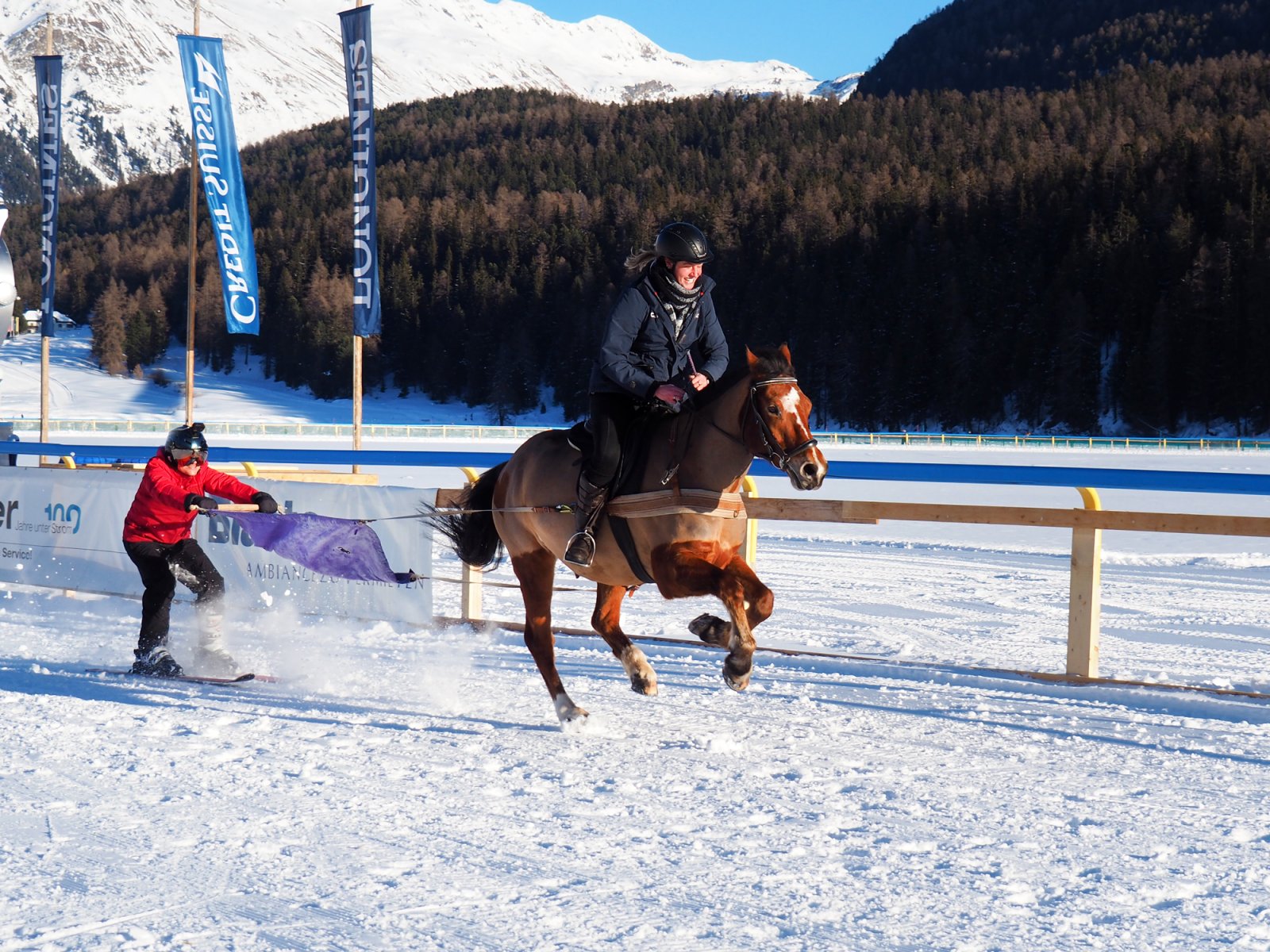
A brief history of skijoring in Switzerland
Thousands of years ago, the natives of Scandinavia would wear rudimentary skis to be towed across the snow by reindeer. In the early 20th century, this practice inspired the Swiss who went on to replace the reindeer with horses. The Norwegian name, snörekjöring, was slightly amended, and the Swiss version of skijöring was born.
The first-ever skijoring race took place in the Engadine valley in 1906. In one-minute intervals, the participants would launch onto the 10k track between St. Moritz to Champfèr. Due to the popularity of this newfound sport, races were moved onto a prepared track on the frozen Lake St. Moritz the following year.
An interesting fact: during the 1928 Winter Olympics in St. Moritz, skijoring was not recognized as a medal sport despite its local tradition. However, it was accepted as an Olympic demonstration sport with a single performance on Feb 12, 1928.
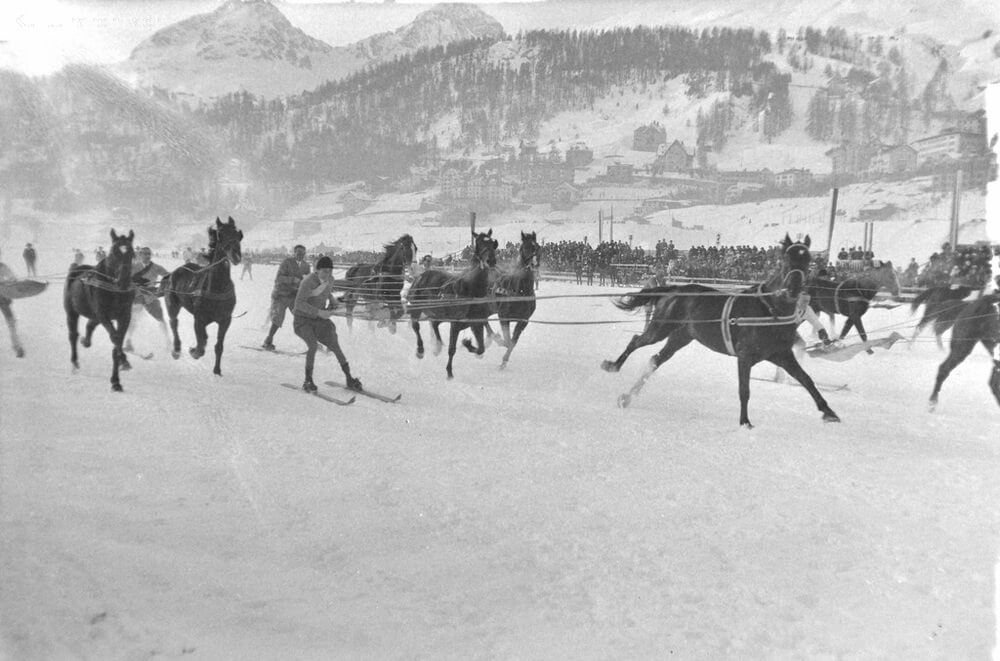
Through the 1930s, only men with horseback experience were allowed into the sport. In 1983, the first woman competed in a race (yet without crossing the finish line.) And since 2009, a new female contender has been whisking up the races: Valeria Holinger.
Back at the beginning of skijoring, skiing skills were considered less important. Yet with today’s horses going at speeds up to 50 km/h, skiing skills are essential - as are athletic condition, good balance, and a fair amount of instinct.
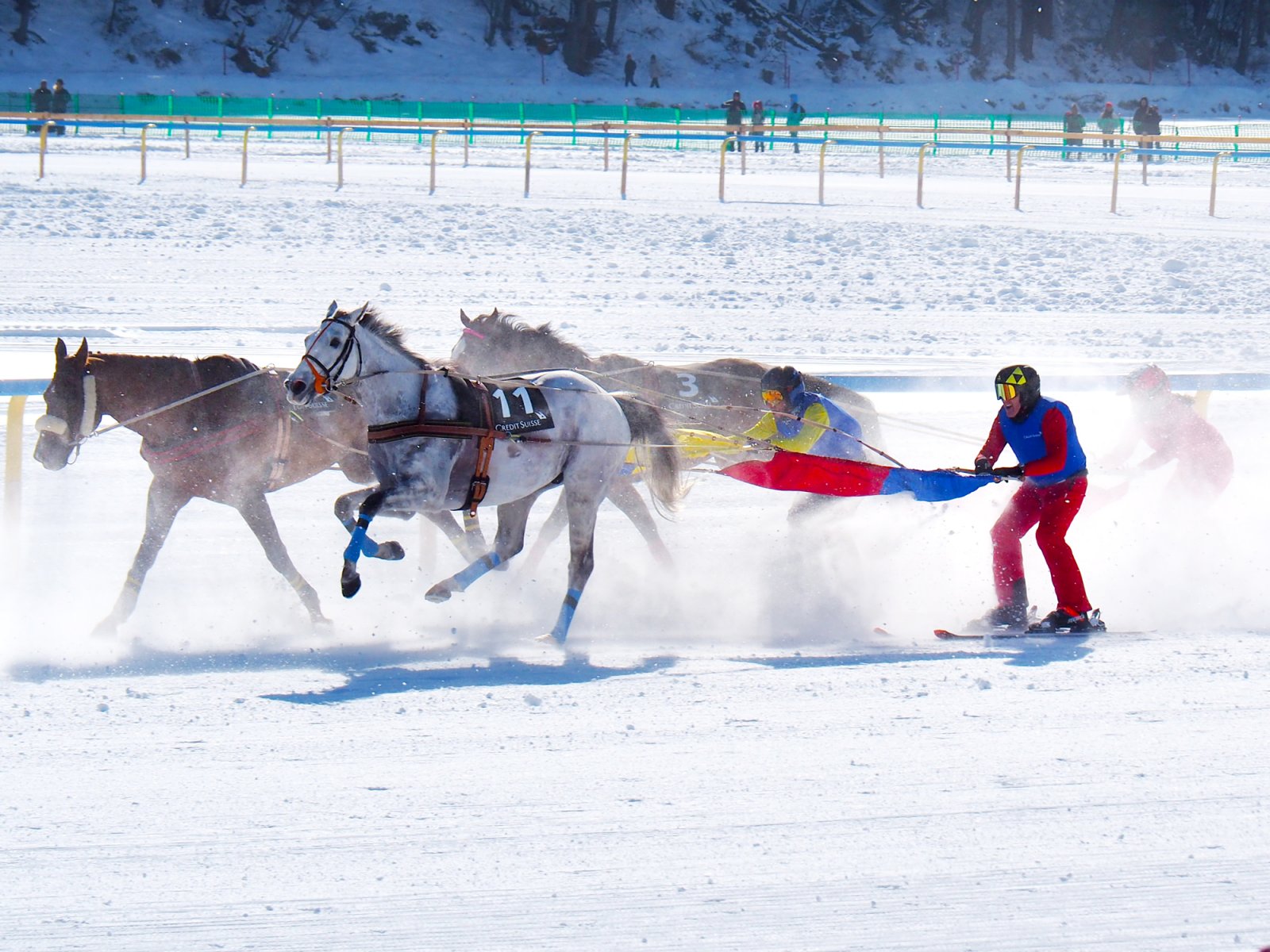
There are two types of skijoring: with or without a rider. Races at the annual White Turf are typically held without a rider whereby the skier handles their own horse. Several horses compete for the best time as they race along the 1750-meter-track. Since things tend to get tight, especially in the curves, skijoring races are reserved for experienced athletes.
Horses are fitted with a light harness and a sort of handlebar for the skier, similar to a waterskiing setup. During races, an additional fabric cover prevents snow and ice from hurting the skier. Race regulations demand colorful skis so that horses can recognize them.
In recent years, skijoring has gained popularity in North America. Destinations like Breckenridge, Colorado, now have tracks for skijoring. But unlike in St. Moritz, the American variant of skijoring includes obstacles with moguls and jumps.
What’s it like to be towed on skis by a horse at full speed?
It is the second weekend of White Turf, and our meeting point with Fredy Wolf is near the finish line on the frozen lake. Our only instruction was to bring our skis, ski boots, and helmets. So far, so good.
Fredy is a legend here in St. Moritz where he was born and raised. Everyone knows Fredy by his nickname, “Lupo”, the Italian term for wolf. Having won numerous skijoring prizes since 1988, Lupo never misses a competition.
Fredy is just wrapping up a skijoring session with another group, then turns his attention to us. Mamiko and I each get a horse with a rider. We feel relieved because we were worried about not having a rider…
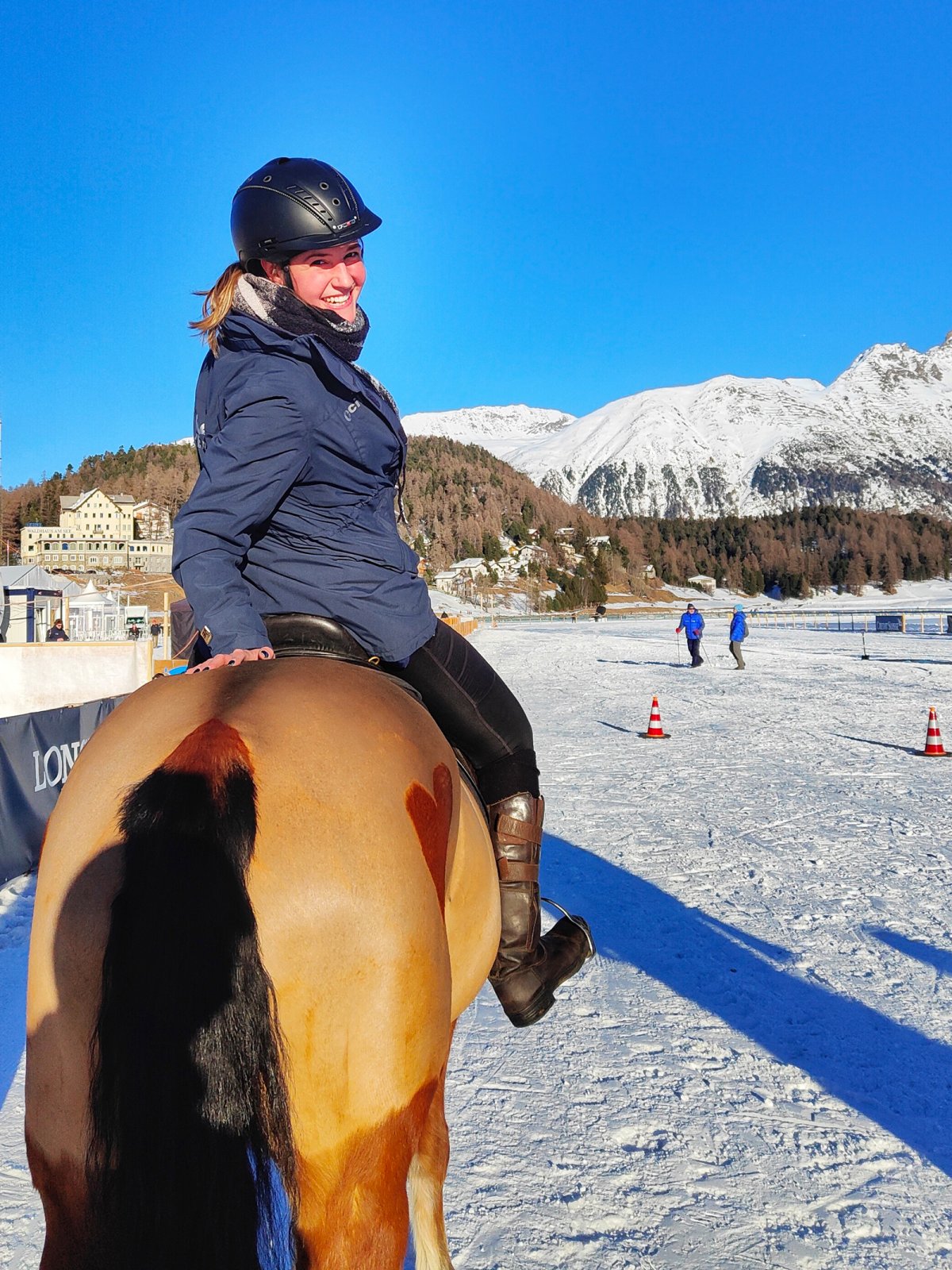
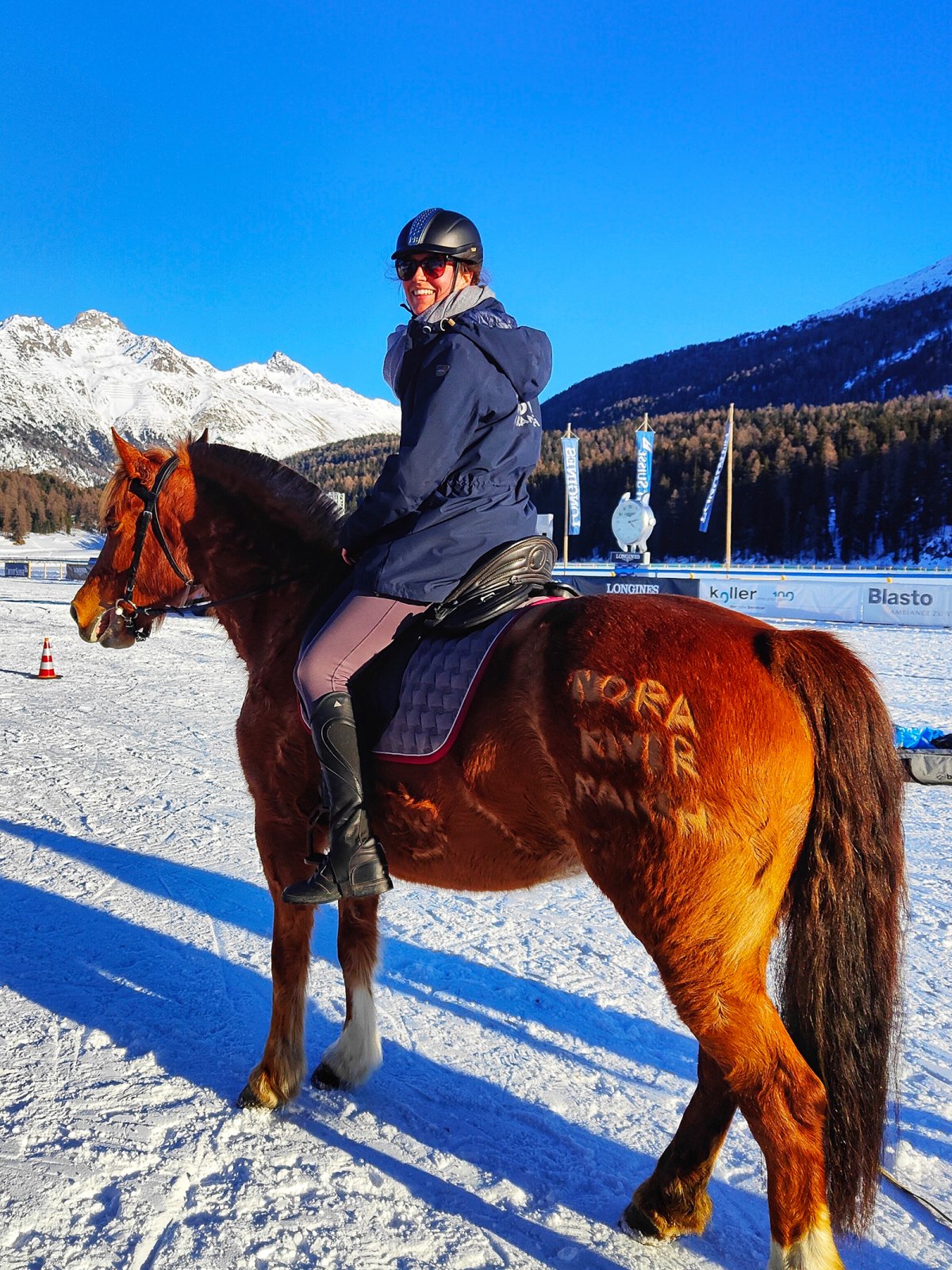
With skis mounted and harness in hand, we are technically ready to go. But a few critical questions remain unanswered: what to do in case of a fall? And how to break?
“Keep holding on to the handlebar, you will not fall. And for breaking, simply form a plowing V-shape with your skis. Also, try not to touch the horse’s butt with the harness - they don’t like that,” Lupo instructs us. Off we go!
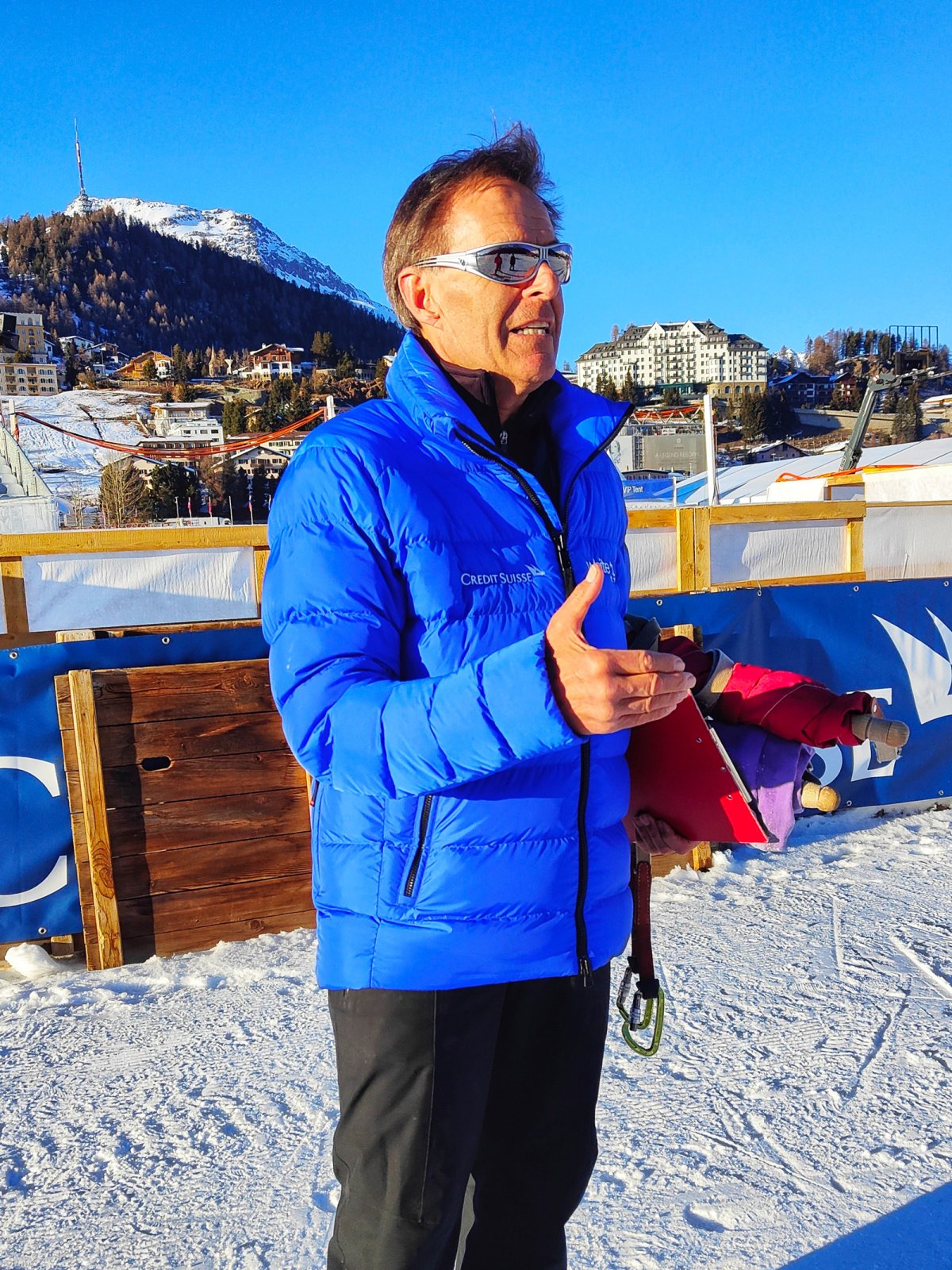
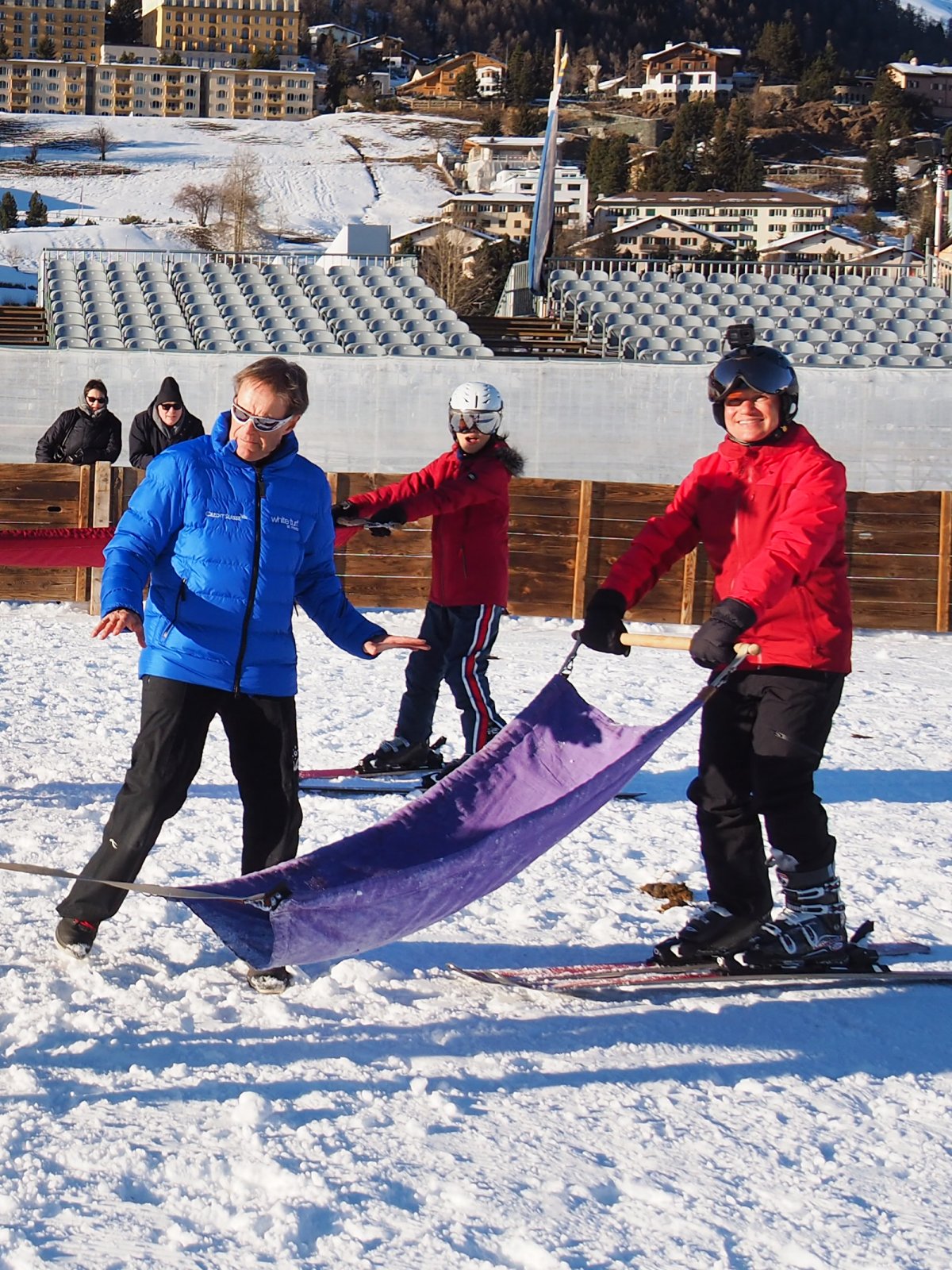
It is an indescribable feeling to be towed across the snow by the power of a thoroughbred. The proximity to this powerful animal, the wind in my face, the mountain scenery… It all amounts to an experience I quickly add to my mental bucket list - just to tick it off the next moment. The closest analogy for skijoring would be riding a rapid, horizontal T-bar ski lift.
We quickly get the hang of it. Our horses accelerate from walking to trotting, from canter to gallop. And even when we zip past the finish line at full speed, we are begging for yet another go. There is no need to be scared or worried in skijoring for leisure - the only action required is to break.
We feel honored to have been instructed by a skijoring celebrity. Thank you, Lupo, for this memorable experience. And thank you, Nano and Nora, for towing us! Here's Lupo with #7 the following day:
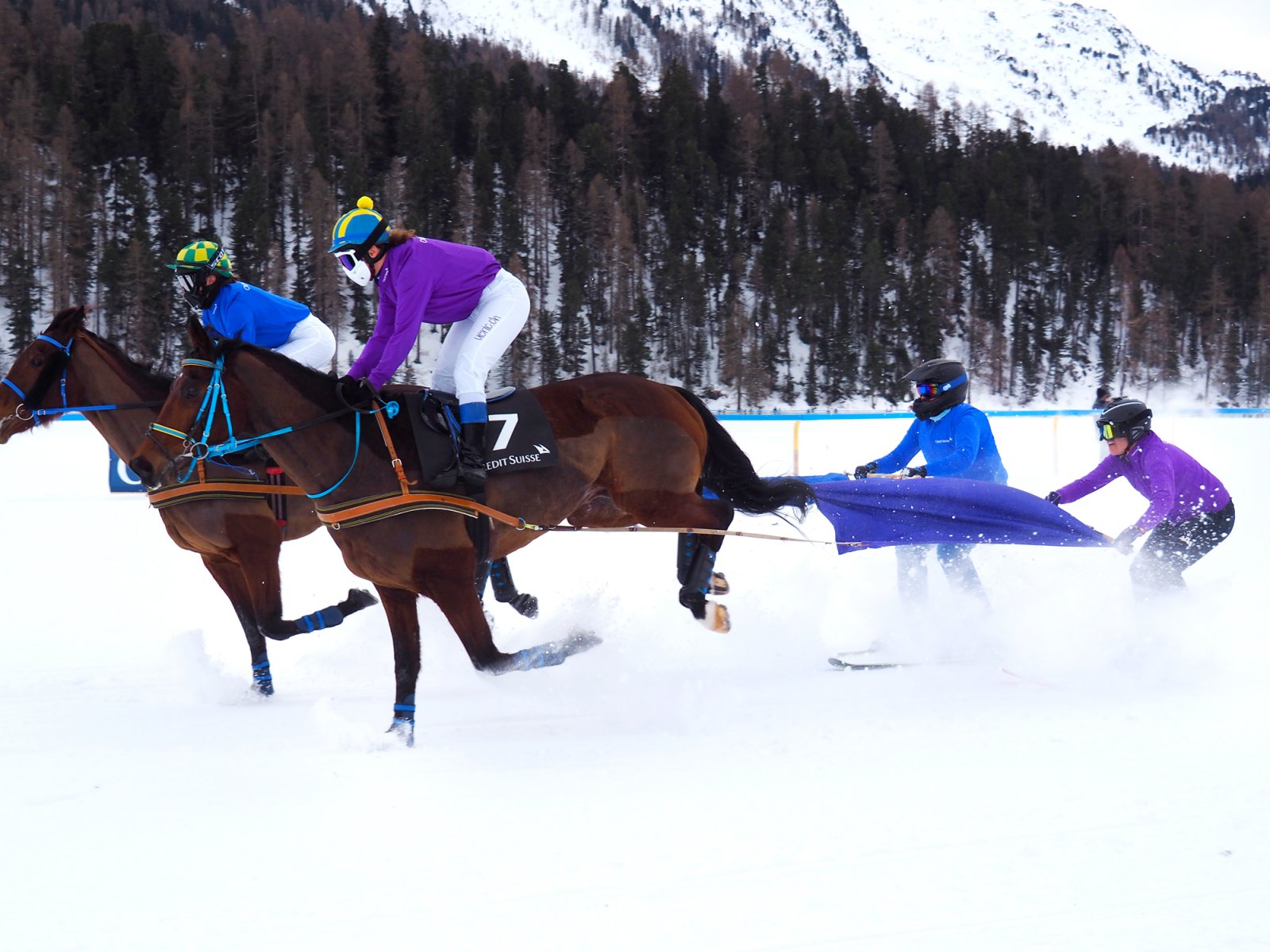
Resources to try skijoring in Switzerland
Skijoring with a rider is an ideal activity for skiers of all ages and skill levels. It could make for a fun team-building activity, but it is also appropriate for families with children. Really, the only requirement is a set of ski gear and basic skiing skills.
There are a few places to try out skijoring in Switzerland. Be aware that this activity is extremely seasonal as it requires wintry conditions.

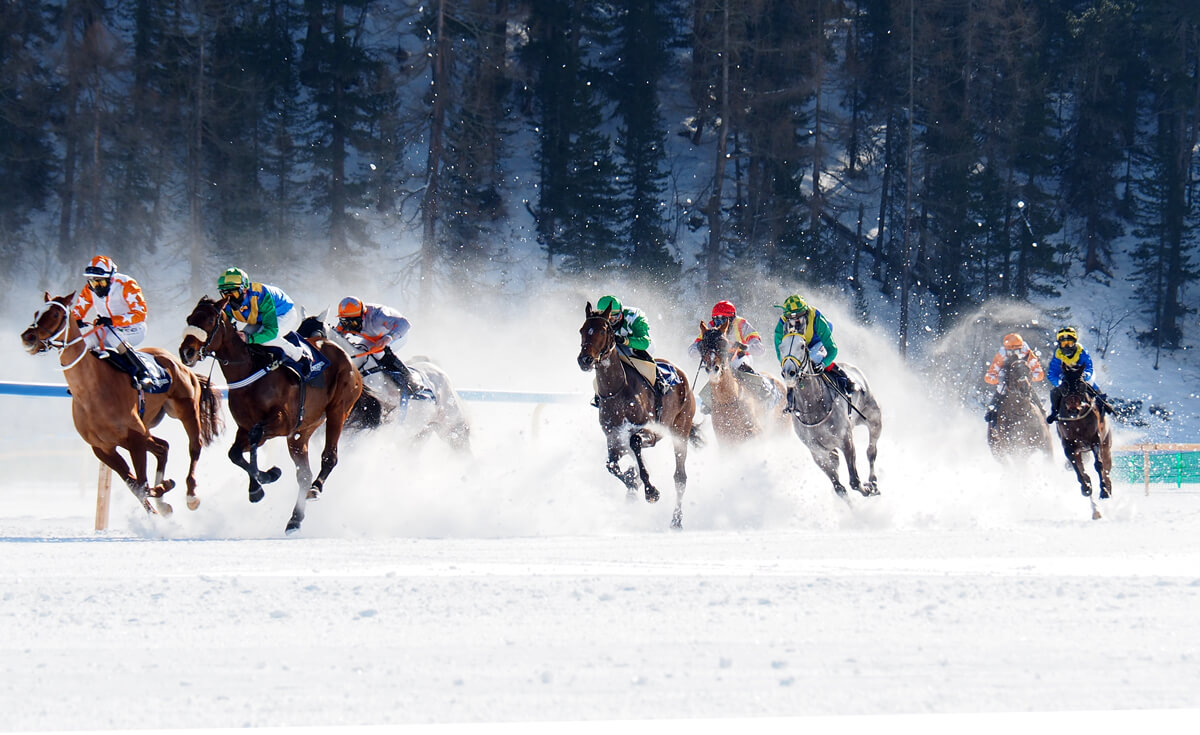

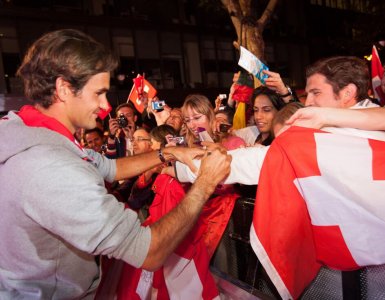
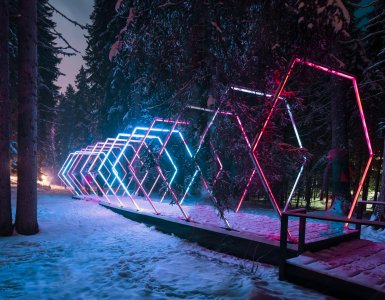

Add comment